The AMD Ryzen 3 1300X and Ryzen 3 1200 CPU Review: Zen on a Budget
by Ian Cutress on July 27, 2017 9:30 AM EST- Posted in
- CPUs
- AMD
- Zen
- Ryzen
- Ryzen 3
- Ryzen 3 1300X
- Ryzen 3 1200
Ashes of the Singularity: Escalation
Seen as the holy child of DirectX12, Ashes of the Singularity (AoTS, or just Ashes) has been the first title to actively go explore as many of DirectX12s features as it possibly can. Stardock, the developer behind the Nitrous engine which powers the game, has ensured that the real-time strategy title takes advantage of multiple cores and multiple graphics cards, in as many configurations as possible.
As a real-time strategy title, Ashes is all about responsiveness during both wide open shots but also concentrated battles. With DirectX12 at the helm, the ability to implement more draw calls per second allows the engine to work with substantial unit depth and effects that other RTS titles had to rely on combined draw calls to achieve, making some combined unit structures ultimately very rigid.
Stardock clearly understand the importance of an in-game benchmark, ensuring that such a tool was available and capable from day one, especially with all the additional DX12 features used and being able to characterize how they affected the title for the developer was important. The in-game benchmark performs a four minute fixed seed battle environment with a variety of shots, and outputs a vast amount of data to analyze.
For our benchmark, we run a fixed v2.11 version of the game due to some peculiarities of the splash screen added after the merger with the standalone Escalation expansion, and have an automated tool to call the benchmark on the command line. (Prior to v2.11, the benchmark also supported 8K/16K testing, however v2.11 has odd behavior which nukes this.)
At both 1920x1080 and 4K resolutions, we run the same settings. Ashes has dropdown options for MSAA, Light Quality, Object Quality, Shading Samples, Shadow Quality, Textures, and separate options for the terrain. There are several presents, from Very Low to Extreme: we run our benchmarks at Extreme settings, and take the frame-time output for our average, percentile, and time under analysis.
For all our results, we show the average frame rate at 1080p first. Mouse over the other graphs underneath to see 99th percentile frame rates and 'Time Under' graphs, as well as results for other resolutions. All of our benchmark results can also be found in our benchmark engine, Bench.
MSI GTX 1080 Gaming 8G Performance
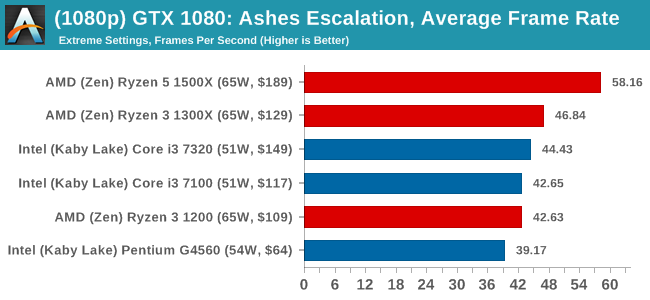
1080p

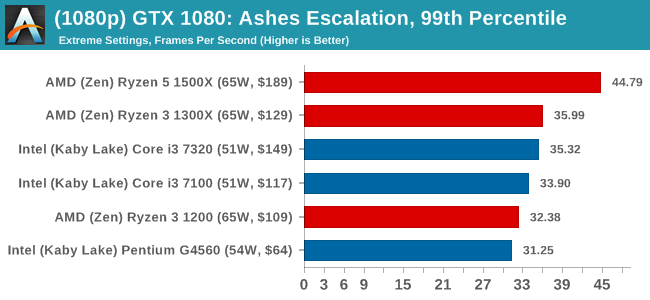
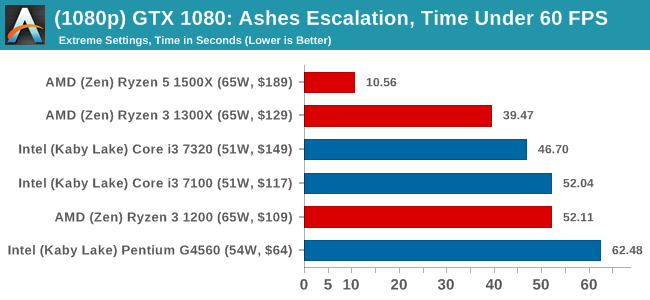
4K
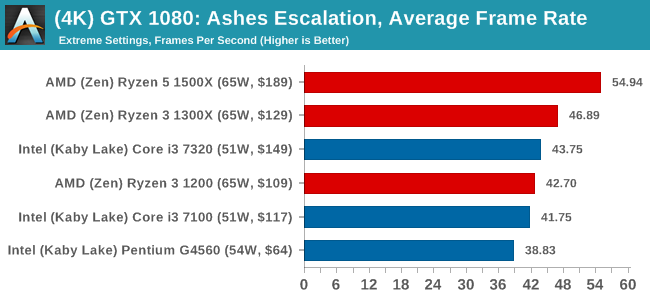
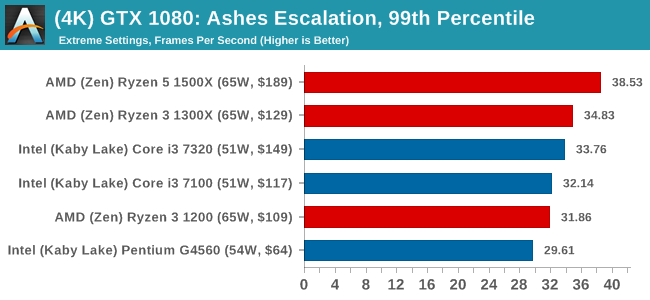
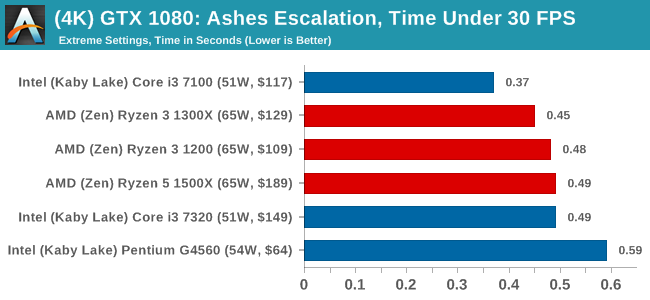
ASUS GTX 1060 Strix 6GB Performance
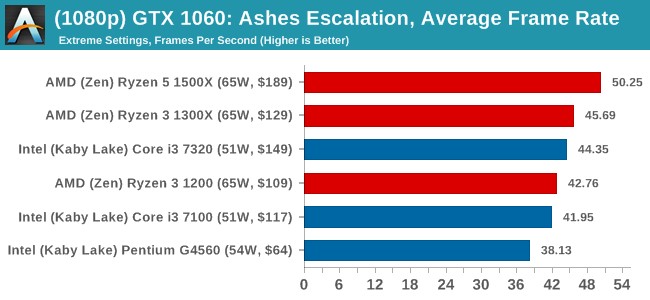
1080p

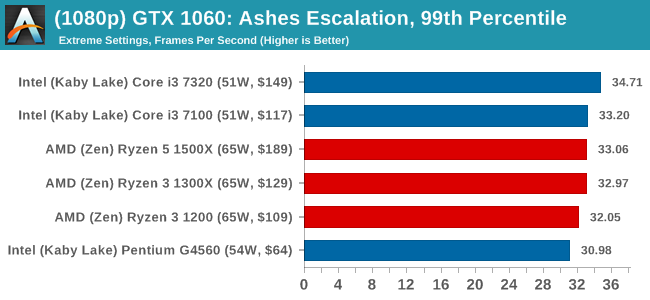
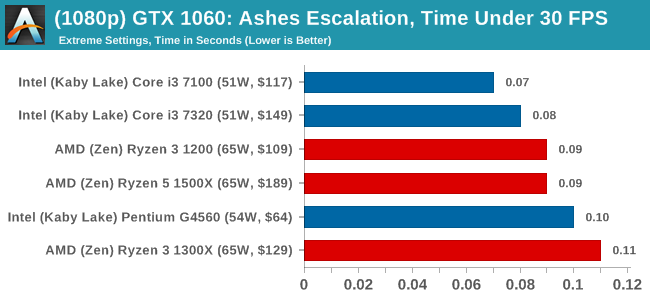
4K
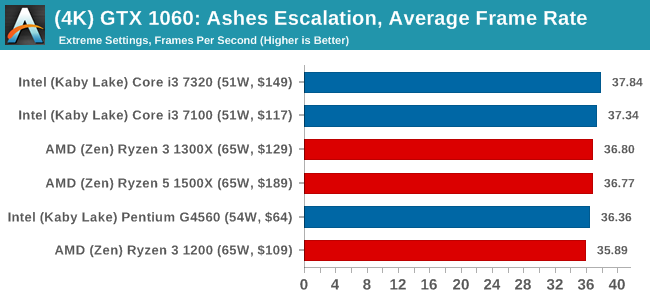
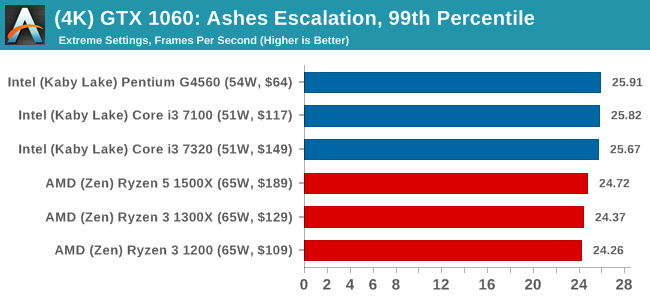
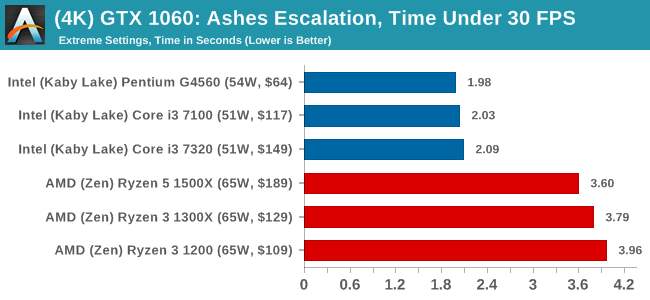
Sapphire R9 Fury 4GB Performance
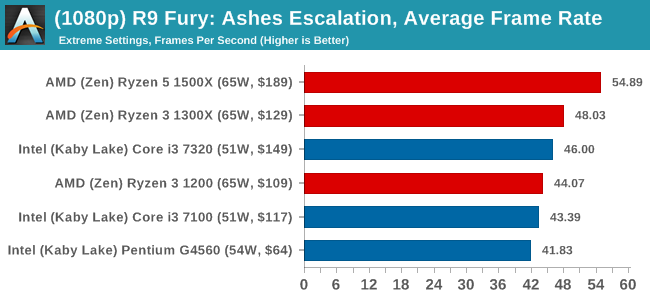
1080p

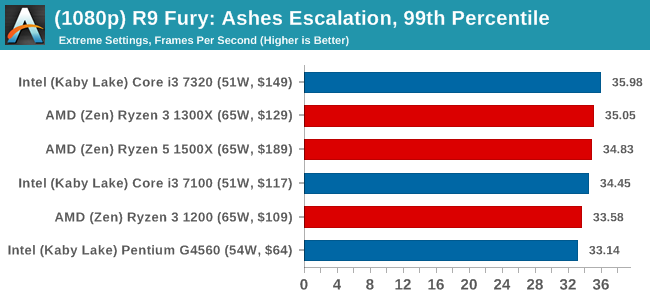
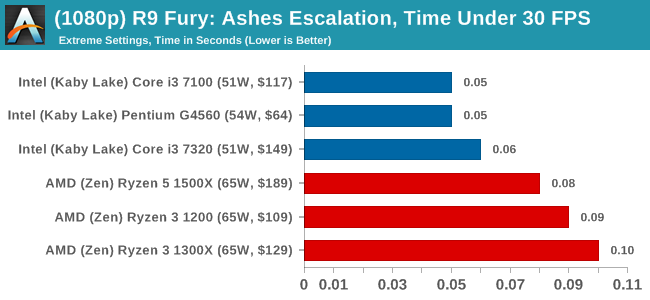
4K


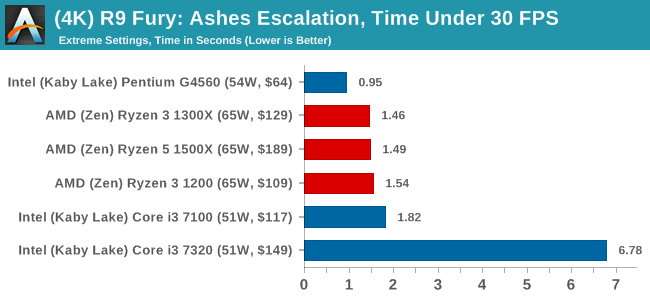
Sapphire RX 480 8GB Performance
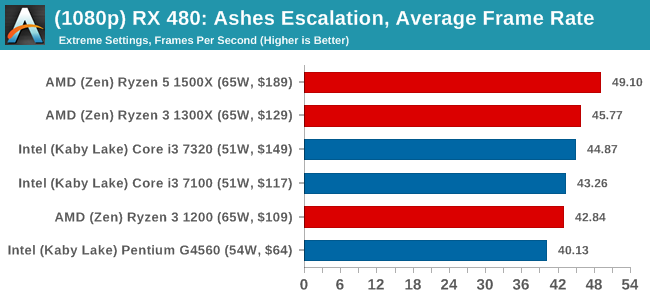
1080p

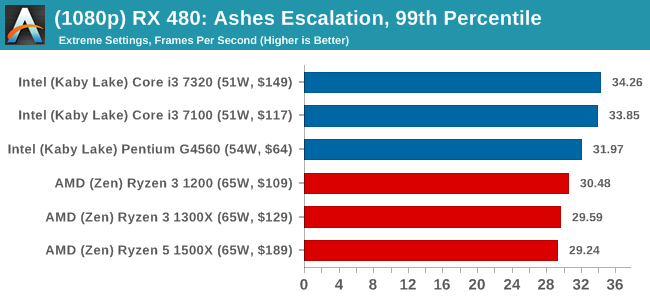
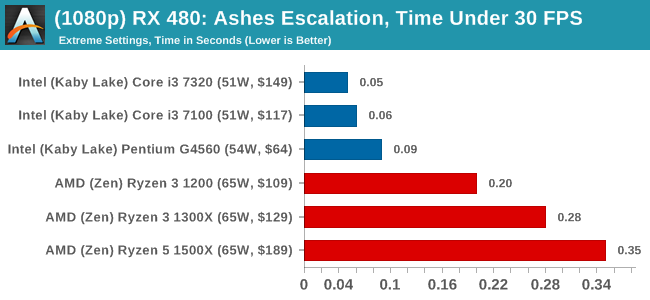
4K
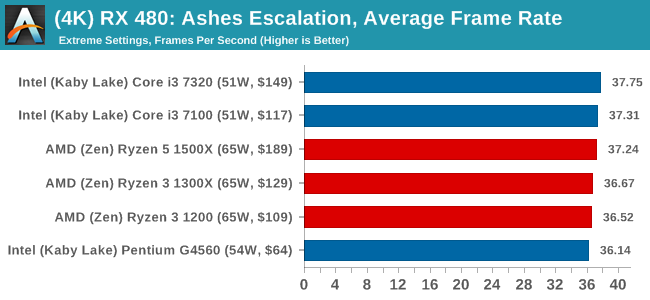
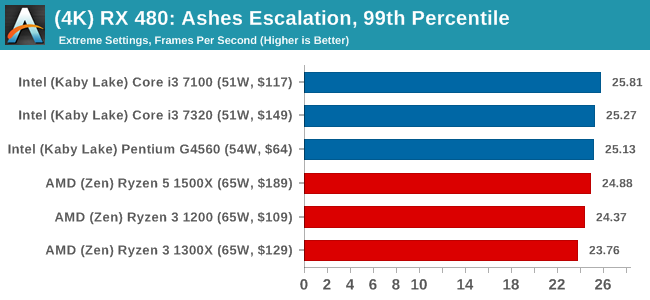













140 Comments
View All Comments
CSM 2 - Friday, July 28, 2017 - link
1200 with A320 + GTX 1050ti perfect family pc or sff media pc I'm very impressed. Thanks AMD for some competitionslickr - Sunday, July 30, 2017 - link
They actually are releasing their APU's at the same time, so if you want cpu+igp you can buy their new APU's.MajGenRelativity - Thursday, July 27, 2017 - link
Could you add an overclocking section? I've been seeing the 1200 overclock well, and that could definitely close the gap with the i3'sIan Cutress - Thursday, July 27, 2017 - link
In the plans, maybe Pt 2 next week after finishing the 1300X.T1beriu - Thursday, July 27, 2017 - link
Yey!AndrewJacksonZA - Thursday, July 27, 2017 - link
"M." You're missing an "m" at the end of your username, T1beriu. ;-)MajGenRelativity - Thursday, July 27, 2017 - link
Awesome! I think overclocking is one of Ryzen's strong points, and it doesn't seem to drive up power consumption too much, because you can hit good clocks on stock voltageOxford Guy - Thursday, July 27, 2017 - link
Or, maybe we could see what happens without being kneecapped by the absurd JEDEC RAM setting.venkatsrin - Thursday, July 27, 2017 - link
Thanks, can only second this request! Pls, pretty pls, do include the overclocked benchmarks for gaming not only with high-end cards like GTX1080 but also the RX470 that you have in there currently.QinX - Thursday, July 27, 2017 - link
The Blender graph seems to be wrong for the 1300X, beating the 1500x by 500 seconds seems excessive.